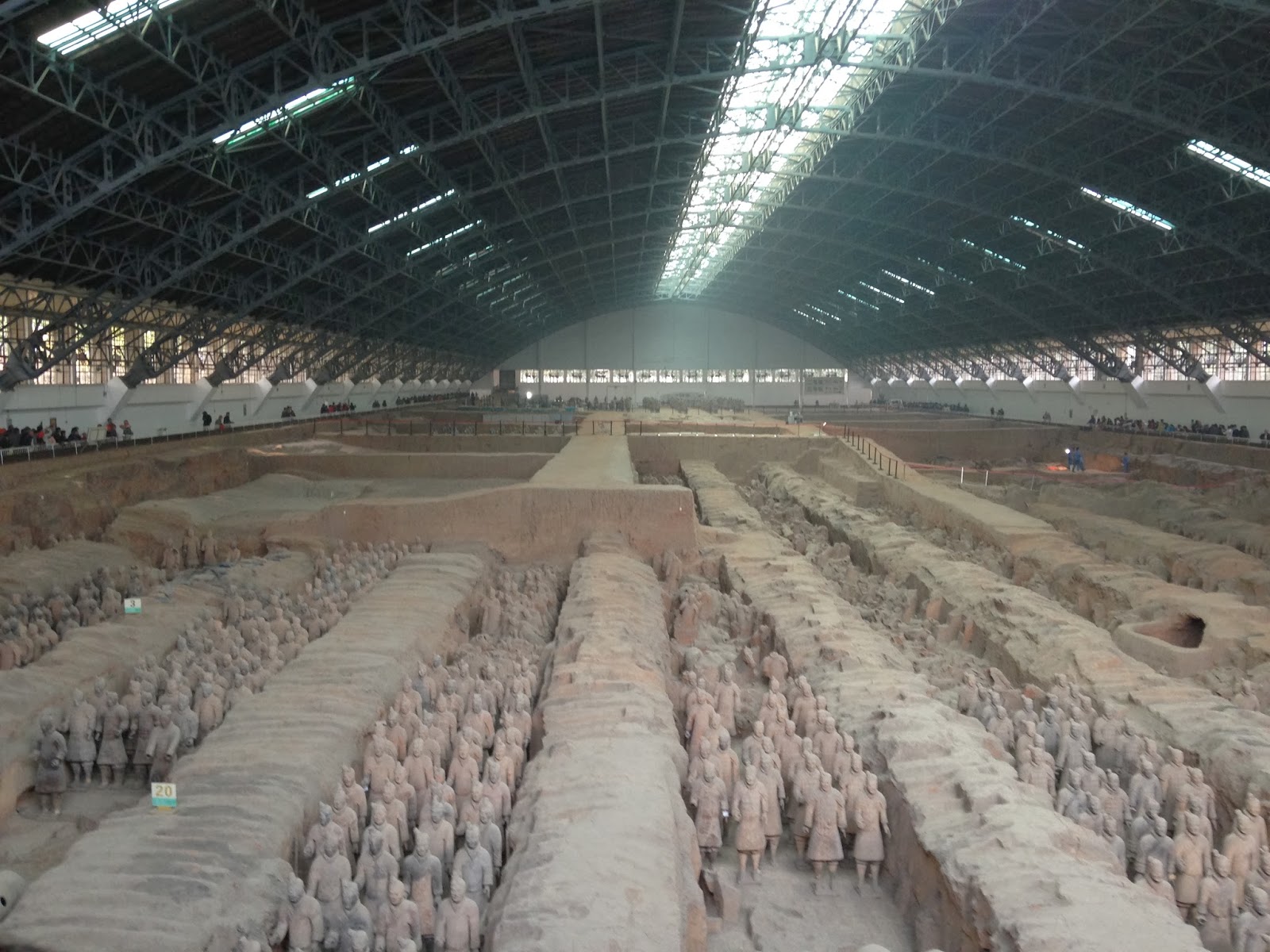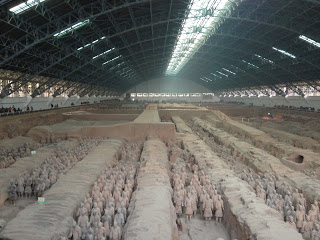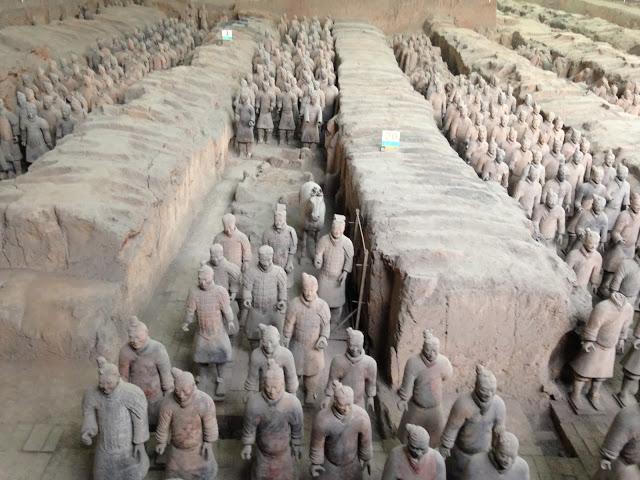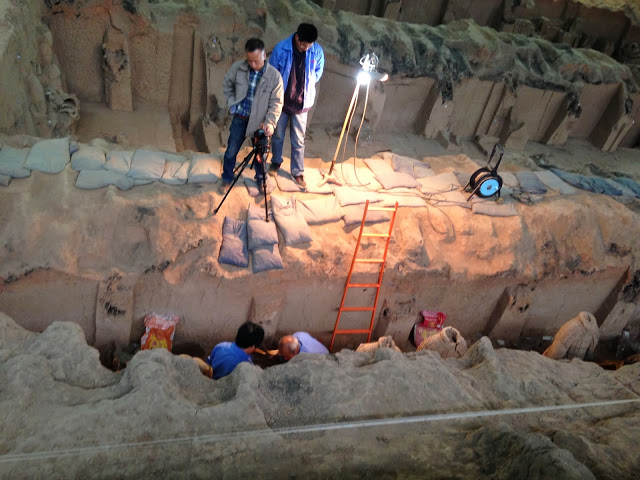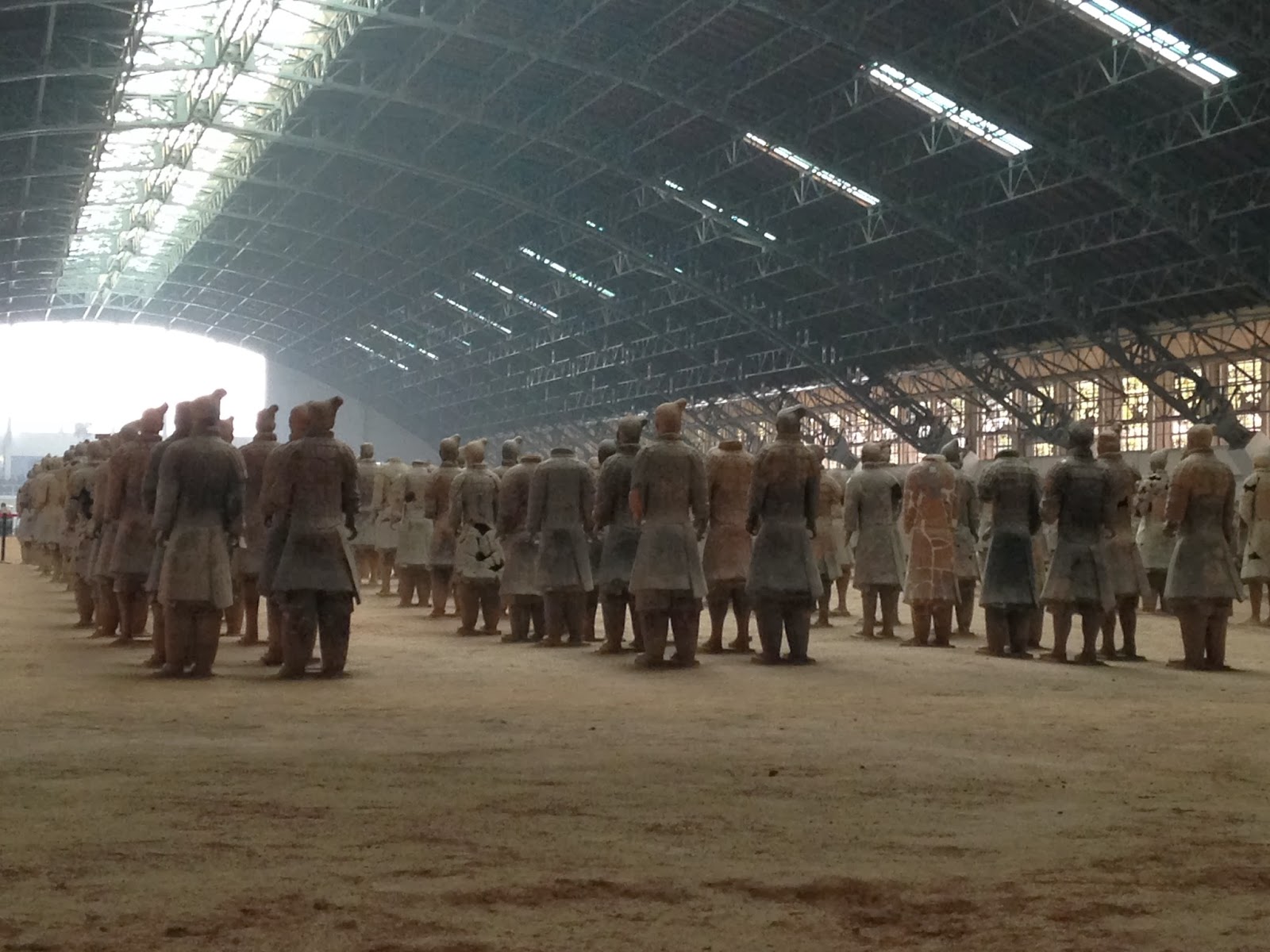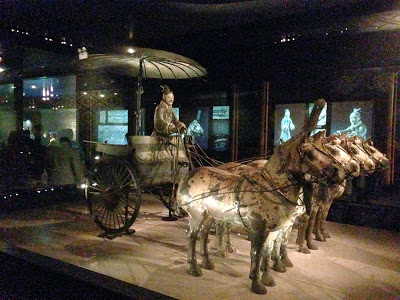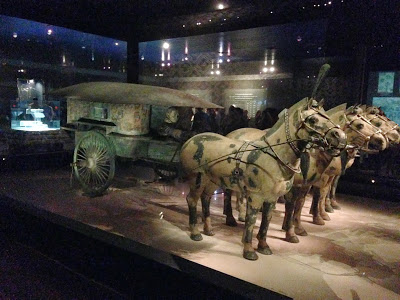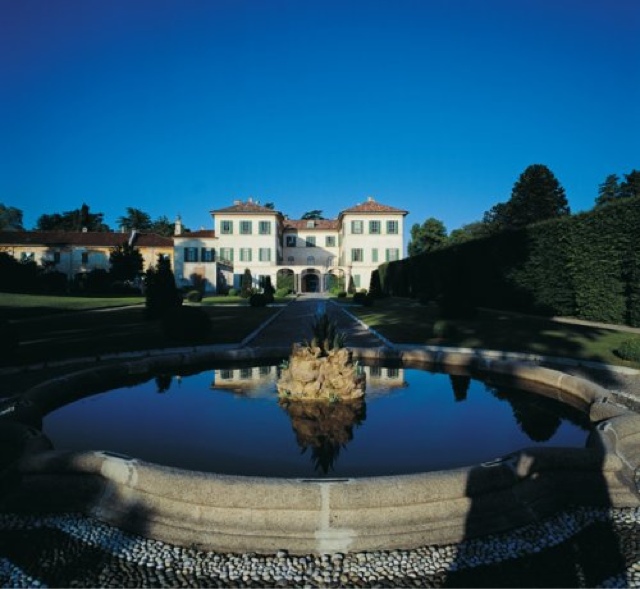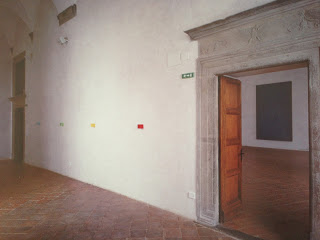- Details
- Written by Alejandra de Argos

Carlos Cruz-Diez, born in Caracas in 1923, is one of the great exponents of kinetic art. He moved to Paris on October 12, 1960 with a view to making it his permanent base. He set up a studio on rue Pierre Sémard and gradually went about expanding it to include other spaces on the same street.

Today his workshop is spread out across a number of properties interestingly, one of his studios still has the same façade from when it used to be a butcher’s shop. Cruz-Diez has assigned a specific purpose to each space: a documentation centre (which holds part of the documentation, the rest being found in his Panama studio), a meeting room, and a space dedicated to restoration work which also contains his work archives. His work area, or experimentation studio, is quite fascinating: so full is it with all manner of tools and equipment that it could well be mistaken for a goldsmith’s workshop instead of a painter’s studio. It was precisely this variety that made the visit so informative and engaging.
His family has continually worked together towards the long-term conservation and organization of the work and legacy of an artist who can only be described as one of the great scientists of colour.
Here we can see the artist posing in front of one of his later paintings (one which I particularly liked), displaying surprising charm and energy for a 90-year-old.

I was able to follow the great artist’s extensive exploration in colour and movement through time, appreciating how Cruz-Diez’s artistic experimentation had evolved, from the use of cardboard and wood at the beginning to numerical technology and aluminium in his later work. He has engaged in a lifelong exploration into the use of his materials, always with the aim of finding the best possible method of expressing his ideas. The one constant in his work is the perception of colour, and the feelings that colour generates in the viewer. He wants us to see colour as having a life of its own.

But the materials and the technique are not at the centre of his work — rather, his main interest lies in making the viewer reflect on the art. The physical painting is nothing but an instrument through which Cruz-Diez expresses his ideas to us. The gloss, the brush-strokes, the style: these are not the focal point of his art. Much like an architect, he designs his blueprint for others to reflect on it and make sense of it. A rational, almost conceptual approach.
|
|
|
Carlos Cruz-Diez. Fisicromía 3. Caracas, Venezuela, 1959 |
 He began his artistic career as a figurative painter but quickly moved on to geometric art in the 50s. In those days he would be painting strips of colour, a particularly difficult technique since the colours would mix into one another. He would then use the sides of cardboard, wood and plastic as lines, which he would paint using different colours, until he was forced to stop due to the OPEC (Organization of the Petroleum Exporting Countries)’s oil price crisis, and the subsequent skyrocketing of prices of derivatives. Naturally, the artist took this as an opportunity to completely reinvent himself, evolving his techniques and simplifying his workflow by using aluminium. His aluminium-made profiles allowed him the freedom to explore colour in new ways. Since the 70s he’s been working with the physichromie technique, painting on top of aluminium with serigraph. This technique, however, was found to be toxic and work-intensive, and was abandoned in 2000 in favour of numerical technology.
He began his artistic career as a figurative painter but quickly moved on to geometric art in the 50s. In those days he would be painting strips of colour, a particularly difficult technique since the colours would mix into one another. He would then use the sides of cardboard, wood and plastic as lines, which he would paint using different colours, until he was forced to stop due to the OPEC (Organization of the Petroleum Exporting Countries)’s oil price crisis, and the subsequent skyrocketing of prices of derivatives. Naturally, the artist took this as an opportunity to completely reinvent himself, evolving his techniques and simplifying his workflow by using aluminium. His aluminium-made profiles allowed him the freedom to explore colour in new ways. Since the 70s he’s been working with the physichromie technique, painting on top of aluminium with serigraph. This technique, however, was found to be toxic and work-intensive, and was abandoned in 2000 in favour of numerical technology.
|
|
|
Carlos Cruz-Diez. Physichromie 625. Paris, Francia 1973 |
His son, Carlos Cruz Delgado, told me that a book has been put together containing photographs of the artist’s childhood in New York in the 40s, Venezuela’s marginalized neighbourhoods and its landscapes, etc. There are also photos of the artist together with his colleagues of the time, such as Calder, Soto or Tinguely, exhibitions of which are planned for next Tuesday, February 4th, in New York, and after that in Buenos Aires and next in Paris — certainly something not to be missed!

His interventions in the urban space and in public architecture have given us a whole new way of looking at art, where changes in the viewer’s position or light of day afford a completely different perception of colour and, therefore, a different emotional state. His works are highly acclaimed across the world.
|
|
|
Carlos Cruz-Diez. Homenaje a Don Andres Bello 1982. Caracas, Venezuela |
|
|
|
Carlos Cruz-Diez. Cromovela 2001, Santo Tirso, Portugal. |
|
|
|
Carlos Cruz-Diez. Parque Olímpico, 1988. Seúl, Corea del Sur. |
|
|
|
Carlos Cruz-Diez, Aeropuerto Internacional Simón Bolivar, 1974. Maiquetía, Venezuela |
|
|
|
Carlos Cruz-Diez, Intervención cromática en accesos al Miami Marlins Ballpark Stadium |
To find out more about his work and research, the Carlos Cruz Diez Foundation’s website has plenty of information on his full range of works.
- Details
- Written by Alejandra de Argos
|
|
|
Foto: Alejandra de Argos |
The Terracotta Army (or "Terracotta Warriors and Horses") is considered the Eighth Wonder of the World and was ordered to be built by the first Emperor of unified China, Qin Shihuang, who began the construction of the mausoleum at the tender age of 13.
Qin Shihuang (259 BC - 210 BC) was responsible for bringing an end to the feuds, achieving the unification of China, building the Great Wall as a defence against the Huns and unifying Chinese thought and culture of the time into a coherent system.
|
|
|
Foto: Alejandra de Argos |
Upon arriving at Xian I was greeted by a great fog, probably similar to London’s Great Smog of 1952. Outdoor visibility was extremely low due to China’s reliance on high-pollution energy sources such as carbon.
Just after landing, I drove for about an hour to visit this large museum, which is made up of three large pavilions, or pits, containing the remains of the army, and a hall containing two bronze carriages, together with information on the museum’s history.
I began my visit at the pit named N1, the largest of the three measuring 230m in length. It was certainly an impressive sight upon entering the space: a vast number of lifesize soldiers perfectly lined up, each with its own personality (their facial expressions are all different). This pit holds the infantry and war chariots.
 |
 |
| Foto: Alejandra de Argos | Foto: Alejandra de Argos |
The N2 pit houses over 1,300 warrior figures, horses and chariots. N3 is the smallest and it is believed to represent the army’s General Staff.
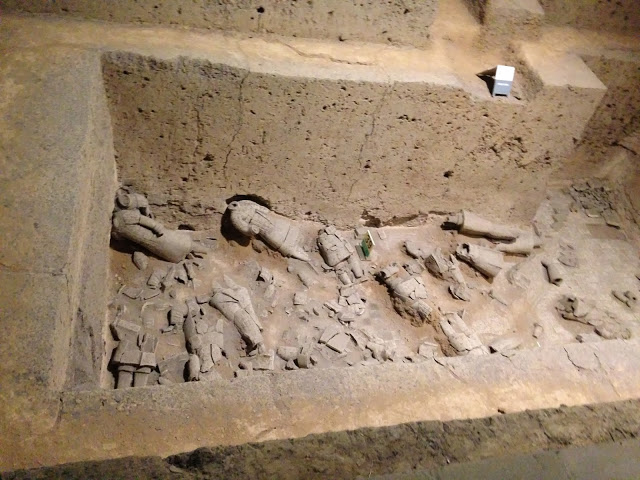
What I found interesting was that even before the construction of the Emperor’s mausoleum, there was already a tradition in place among the feudal lords of burying lifesize terracotta figures near their tombs or mausoleums. Unlike these figures, however, those of the Emperor Qin Shihuang were made to a much higher standard, thanks to better quality clay mix and the use of high-temperature ovens. Coloured pigments would then be added at a later stage. What is most fascinating, however, is that the bronze weapons were covered in a chrome coating to preserve the metal from corrosion, a technique not seen in Europe until as recently as 1930.
As our guide explained, the Emperor Qin Shihuang sent 700,000 workers into forced labour for the construction of the mausoleum. On the day of his burial, upon order of the new Emperor, over 10,000 people were also buried, as well as all non-childbearing concubines and a large number of construction workers.

In 1974, purely by accident, a group of farmers happened upon some broken remains of the figures while digging a well, and a team of archaeologists was brought in immediately to begin the excavation work. It is thought that there are still around 8,000 figures buried in the earth.
|
|
|
Foto: Alejandra de Argos |
Specialists are currently at work to recover the soldiers, so that new restoration work can be carried out. There are still thousands left to be unearthed, including the Emperor’s main tomb.
|
|
|
Foto: Alejandra de Argos |
The museum contains these two bronze carriages decorated in gold and silver, which together made up the Emperor’s funeral procession. The first carriage’s driver would be travelling on foot, and its role in the procession was to clear the way ahead, whereas the second carriage was used to carry the Emperor’s soul. The two carriages are beautifully displayed here, two precious jewels buried under ground for over 2,000 years (the restoration work alone took eight years). The horses were painted in white in order to protect the bronze from rust.
|
|
|
Foto: Alejandra de Argos |
|
|
|
Foto: Alejandra de Argos |
Recommendations:
For those who cannot travel to see the Xian warriors, Madrid’s Fernán Gómez-Centro Cultural de la Villa is hosting the exhibition 'Terracotta Army' until March 2, 2014. A part of the N1 pit has been reproduced here and can be visited; the centre is also showing an informative documentary about the terracotta army, which may well be the same that is shown to visitors in Xian.
|
|
|
Foto: Alejandra de Argos |
- Details
- Written by Alejandra de Argos
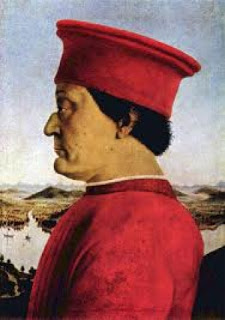
In 1999 I visited the magnificent Ducal Palace in Gubbio, owned by Federico de Montefeltro, Duke of Urbino and one of the 15th century’s great wonders. It was there, in the palace’s cold, empty halls, that part of the Panza di Biumo collection is held, containing works from the 1980s and 90s.
Monochromatic paintings in various formats filled the walls of the palace, and each of the participating artists was given a specific space in which to display their talents. The collection included Ettori Spalletti’s simplicity and harmony, metallic monochromatic paintings by David Simpson, geometric paintings by Ford Beckman and even small cubes by Stuart Arends, whose tiny size caught my attention - appearing in different colours on a large wall, it seemed as though they would simply vanish in space.
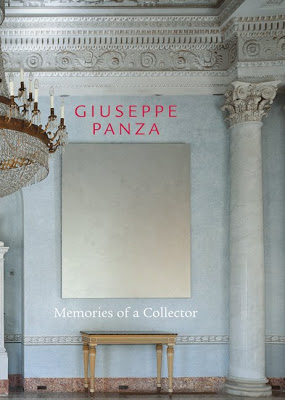
In his book Memories of a Collector, Panza reflects on Arends’ imaginative and sensitive artwork, noting that rather than hiding a certain ideology behind its surface, its sole purpose is aesthetic: beauty, composition and colour. There are times when visitors are grateful for the simple aesthetic contemplation of a piece, without feeling as if they are missing out on a greater message that the artist is trying to communicate.
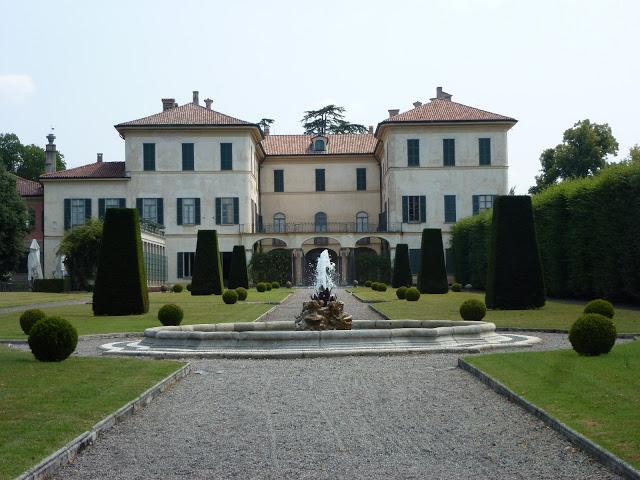
In September 2012 I had the chance to visit Villa Menafoglio in Varese (near Milan), a splendid building and home to Giuseppe Panza, one of history’s great contemporary art collectors, who lived there until his death. His widow Giovanna, who shared his passion for art, still lives in the Villa today. Panza’s interests were broad, including philosophy, astronomy and biology, the first in particular informing much of his art collection. He was a passionate man who tirelessly pursued his search for truth in life and art.
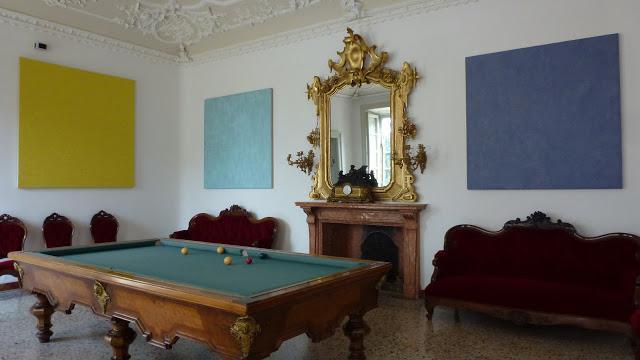
He bought his first painting, a Tàpies, in 1956, attracted as he was by its pessimism which he recognized as being the result of the social traumas and political upheaval after WWII, and which deeply affected him personally. He was collecting art from the United States, spurred on by the lower prices and a more energetic, exciting art scene, at a time when Europe was not paying much attention to the American art market. Towards the end of the 50s, he starts buying Rothko’s spirituality, the every-day of Rauschenberg as a conceptual form of expression, the endlessness of Kline… In the 60s, he moves towards ever more abstract art, minimalist and conceptual works that are stripped to their essence, adding artists such as Donald Judd, Dan Flavin, Richard Serra, Bruce Nauman and Robert Morris to his collection. In this period he also shows an active interest in the emerging pop art movement, acquiring works by Lichtenstein, Oldenburg and Rosenquist, among others. His collection continues to grow steadily, eventually adding up to over 2,500 pieces: a staggering representation of every avant-garde movement that came out of the second half of the 20th century.
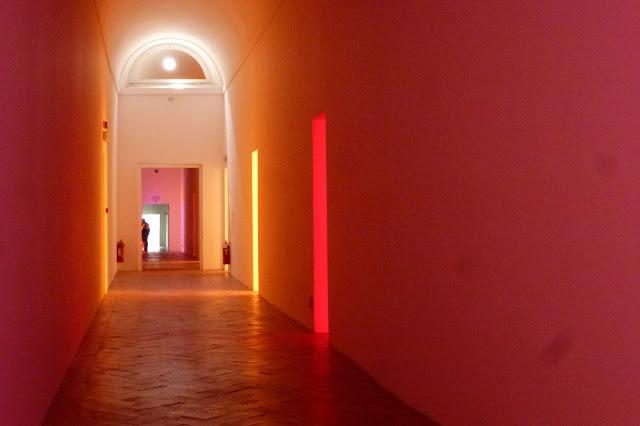
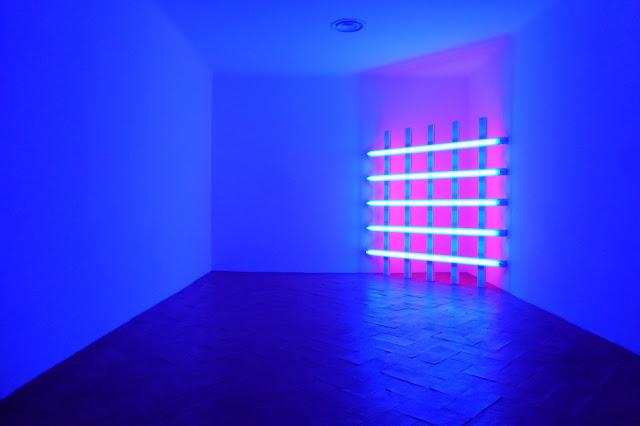
Today Villa Menafoglio maintains a permanent collection, even though the majority of the original collection was acquired by Los Angeles’ Museum of Contemporary Art and the Guggenheim in New York. What I found most fascinating was a part of the villa dedicated to Dan Flavin, made up of various halls each containing an installation piece by the artist: I’d certainly never seen a larger permanent space dedicated to Flavin before. The space was filled with complete silence, and visitors would walk down corridors lit by lights in adjacent rooms. The halls were set up to induce visitors into an almost mystical state of deep contemplation and reflection. Another artist whose work caught my attention was James Turrell: his work, which changes the environment around it, plays with space, light and our perceptions in general, sometimes tricking our senses in a surprising way. Other artists of note here are David Simpson, Max Cole, Fredenthal, Charlton and Beckman, as well as an excellent collection of African and Pre-Columbian art.
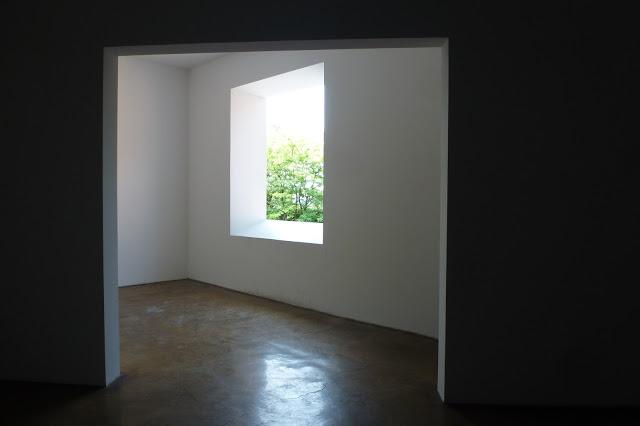
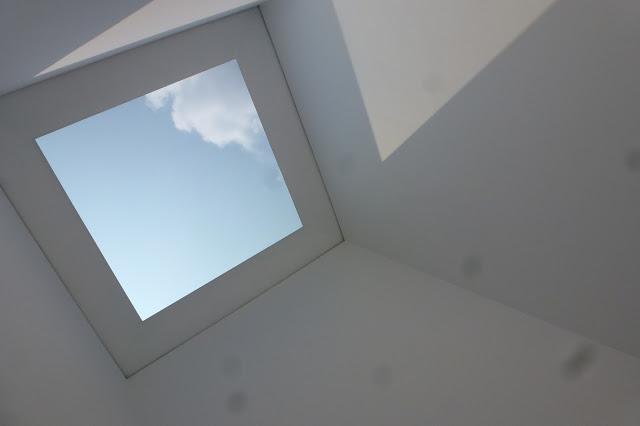
A visit to the museum is highly recommended - through its collection, Panza has tried to understand the society of his time and the profound changes it was going through. This close relationship between art and the passing of time, together with the idea of art as a channel for humanity’s deepest concerns, were the common threads in his life and collection.
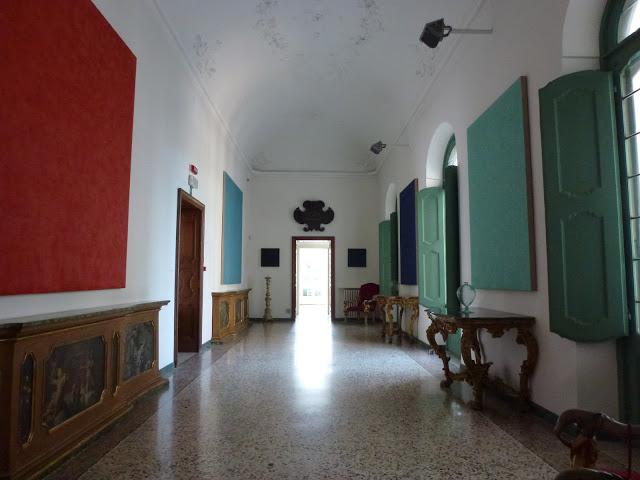
Fotos Camilayelarte











